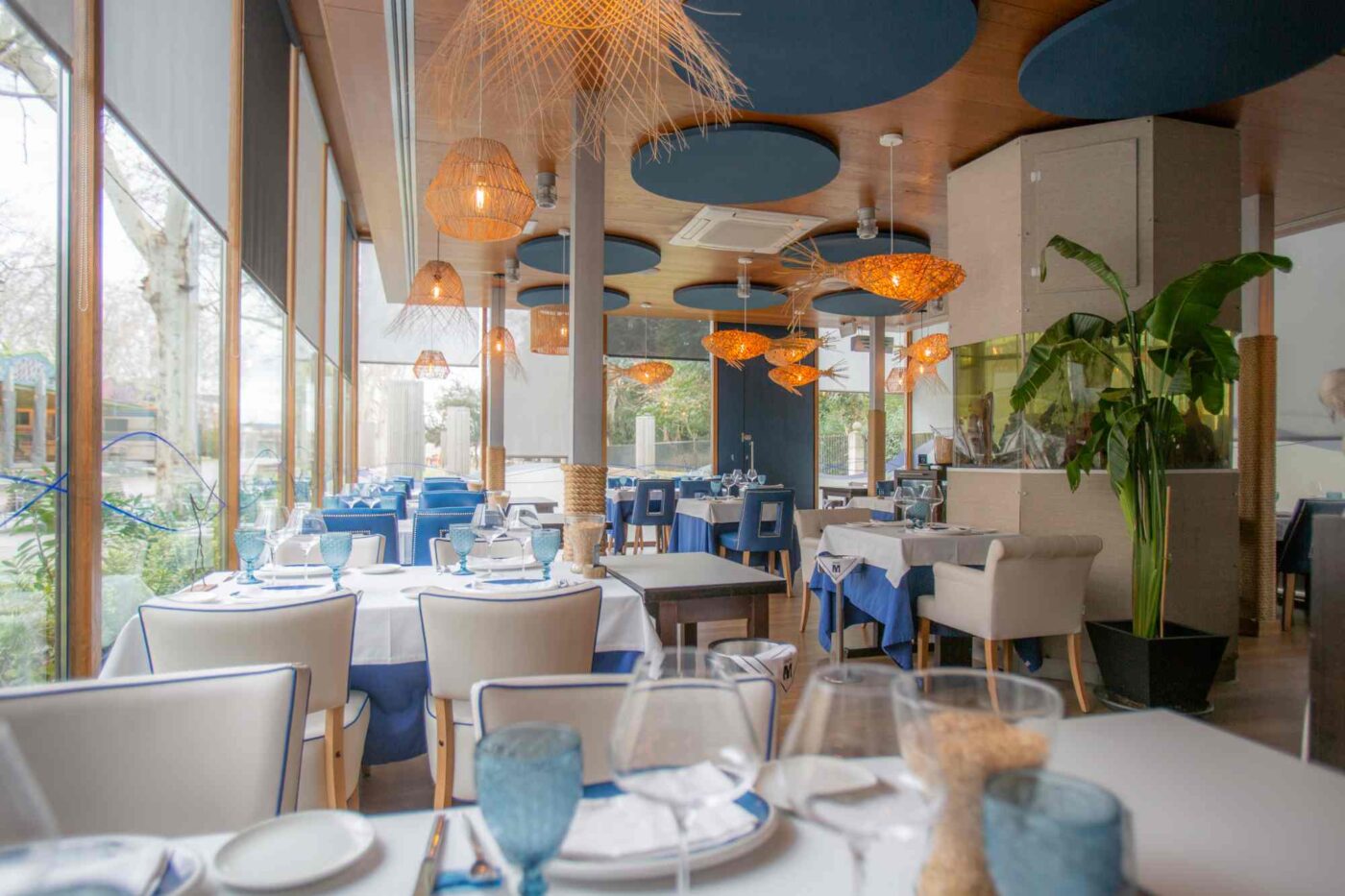Aquarium: the beating heart of Pucela with a taste for tuna
Summary:
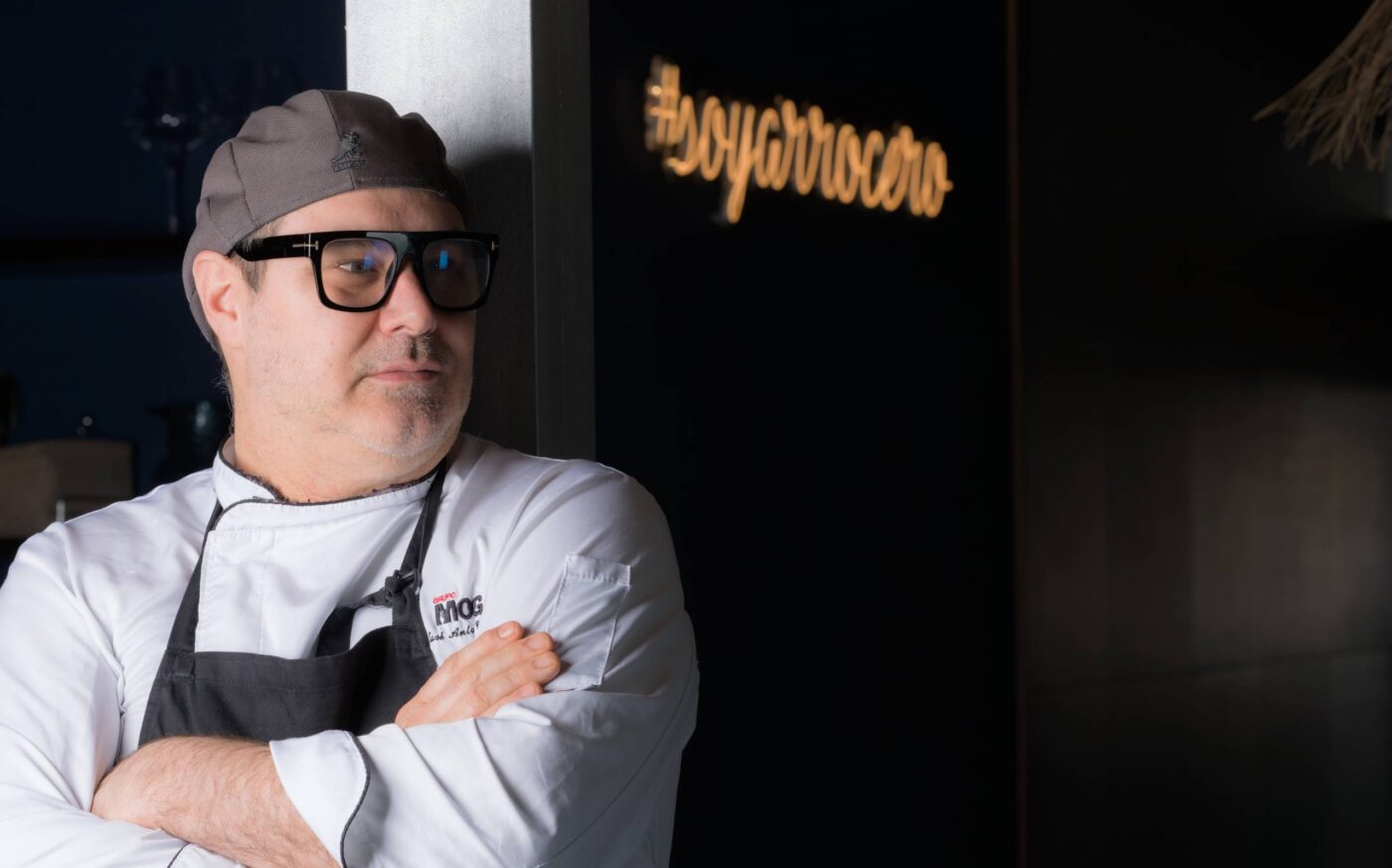
A logbook by Sensei Hiroshi Umi
A season or two ago we travelled to Menorca to give our account of a hidden gem of a restaurant by the name of Aquarium. Tucked away by the quiet harbour mouth of Ciudadela, the star of its kitchens is the lobster, inevitably stewed in the form of an outstanding bouillabaisse, served with fried eggs and potato in its most popular variant. There, alongside the costly and appetising crustacean, bluefin tuna shares the menu and the patrons’ preferences, as we were able to report in that summertime post.
Well, that Aquarium is an offshoot of the mothership of the same name which opened its doors 11 years ago in Valladolid under the aegis of the Moga Group, today a culinary giant. In the shadow of Campo Grande, a smaller-scale version of Madrid’s Retiro park, Aquarium is one of the most recognisable and popular restaurants in the Castilian city, with rice and bluefin tuna its standard-bearers.
José Antonio Guerrero, executive chef of Aquarium
In the boiler room, the frying pans and stock pots are in the hands of executive chef José Antonio Guerrero. Affable and chatty, he has millions of miles on his culinary tachograph, recounted with a sardonic air. “I am a gudari, which in Basque means warrior, Guerrero, like my surname. I was born in Gernika some time ago now,” he lets slip as an introduction. We had the chance to deal with chef Guerrero at the Tapas championships, in which he is a consummate specialist thanks to his skill in miniature. He carried off the top prize at the first edition of GourmetTapa by Fuentes in 2023, as well as claiming other accolades in different contests. We previously reported in depth on that prize-winning japo-taco.
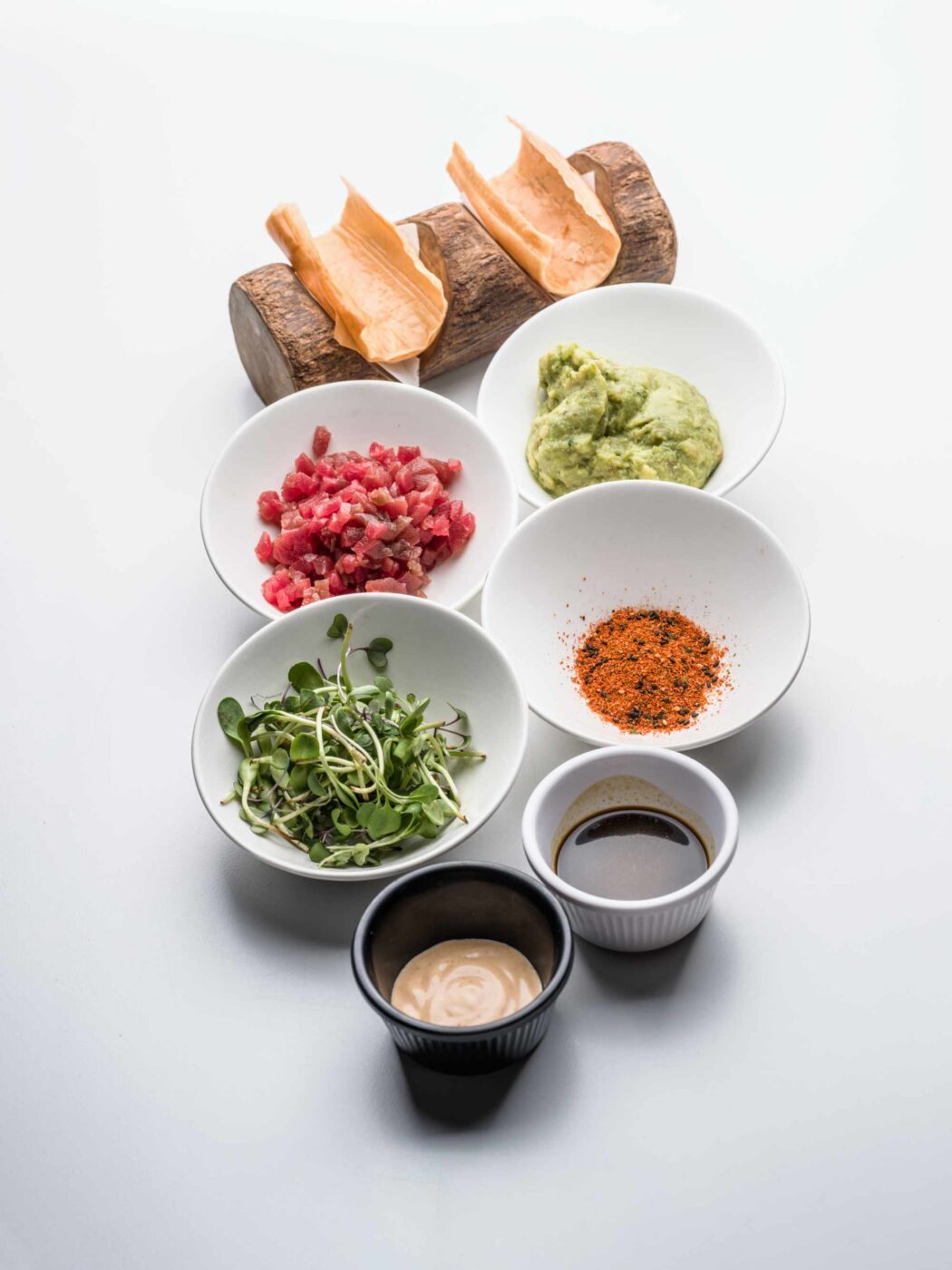
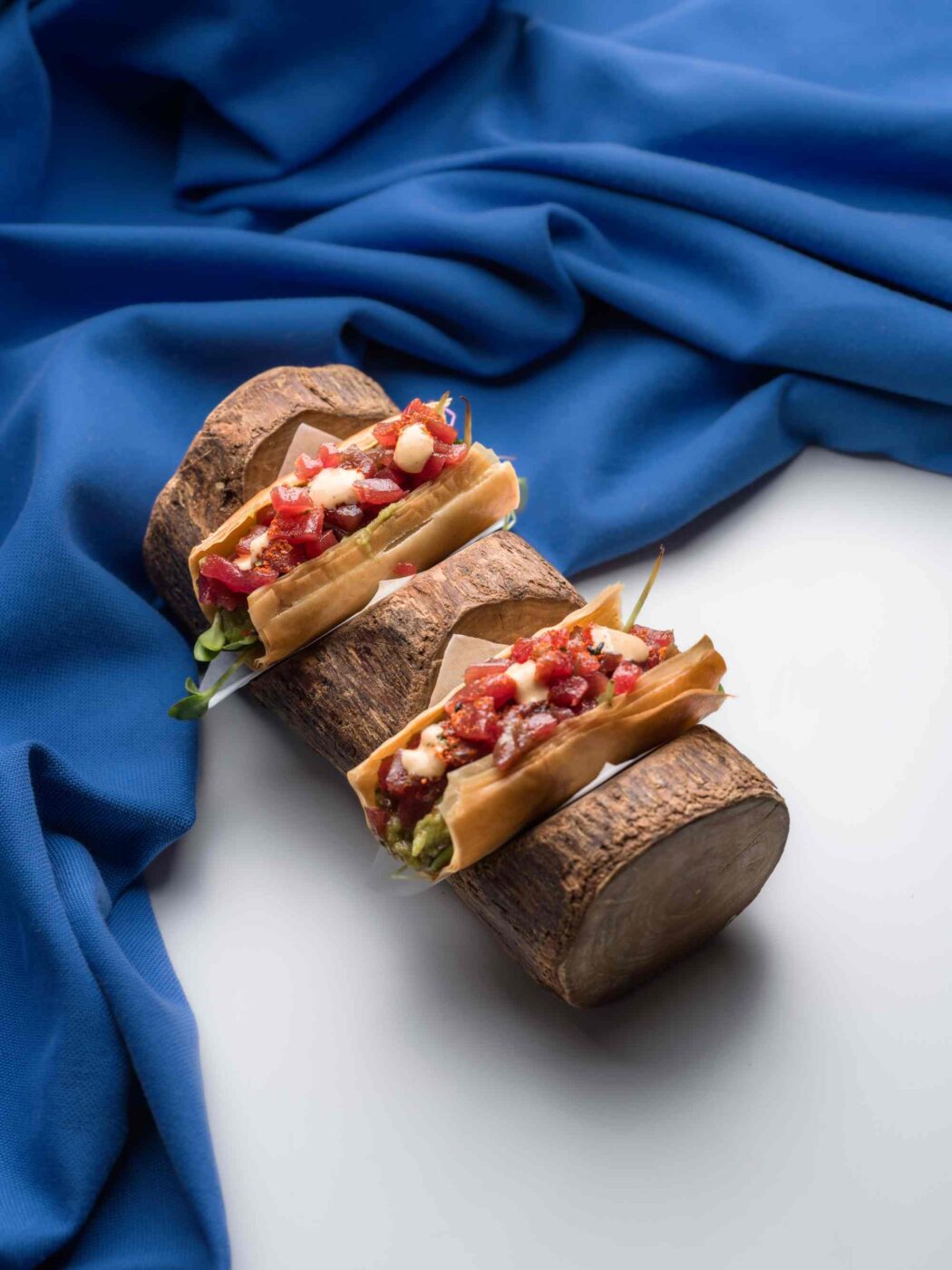
Today we are here for another round, in which he sets out his traceability, and the place that bluefin tuna occupies in his philosophy. “I got into this whole cooking business because I was no good as a student. I didn’t like it, I was bored. And then I did a cookery course in Gernika and loved it, I was working while also studying at the Lejona Catering School, which was like a university, where we were serving a thousand people or more. That first place where I worked was called Gambara, which means ship’s cabin in Basque, an Italian restaurant in Gernika. I learned a bit of everything there. I would have been 20 years old. And then I was at the Portuondo brasserie in Mundaka, with the famous surfing waves. I filled the bar with pintxos and the place took off. We had them queueing out of the door. I remember the bread with egg, crayfish and mayonnaise, the stuffed omelettes, txakas (crab sticks), battered squid, recalls the chef, who wanted to be a top footballer, although he made it “as far as the Fourth Division”.
In between goals, the typical youthful partying and those Basque tapas with which he learned so much, he took charge of that restaurant by the name of Gambara, veering from success to bankruptcy in barely three years. “They rerouted the bypass, the highway, and the money dried up,” he laments. He spent time in stellar kitchens in San Sebastian, before tiring of it all and heading off to Ibiza with his wife. Hotels, restaurants, frenzied partying… He saw in the new millennium having the time of his life.
Aquarium: a tuna port in Valladolid
When things calmed down he moved to Valladolid (Montico Group), spent some time in Majorca and Fuerteventura, then back to the city on the River Pisuerga to sign up at the Moga Group around 2012. The aim, to start a family, lay some solid foundations. “I did a trial here at Aquarium, and the owners (the García Montaner brothers) loved what I served up. We have grown a lot since then, with the venue alongside, Sabores, which is more informal, the Valladolid Pintxos Week, and now the Orignario inn behind the Plaza Mayor. We are getting a central kitchen ready here alongside, the recent Hotel Senador in Maspalomas… Aquarium is today well known as a specialist rice restaurant, where bluefin tuna has always been an important part of the menu”, Guerrero explains.
“When I arrived, they already had the tataki and tartar, but they weren’t ordered much. We now get through 10-12 kg of tuna a week. We must sell more than anywhere else in Valladolid, even though we are not on the coast. Two years later, and people are still coming here for the japo-taco, which is filo pastry with sichimi togarasahi butter, baby salad leaves to give freshness, with a taste of sunflower seeds and beetroot, guacamole, the tuna in its ponzu secret sauce, drops of kimchi, Chinese seven spices…,” he explains about the best seller in the place where it was first devised. Alongside that enduring hit, a seared tataki with soy mayonnaise, plus wasabi cream cheese, baby vegetables and a textured soy sauce. His acclaimed tartar is made with wakame seaweed in the form of a springtime tiara or bed, diced akami with hot sauce, onsen egg and kimchi mayonnaise, furikake and toast with oil to dip into all that flavour.
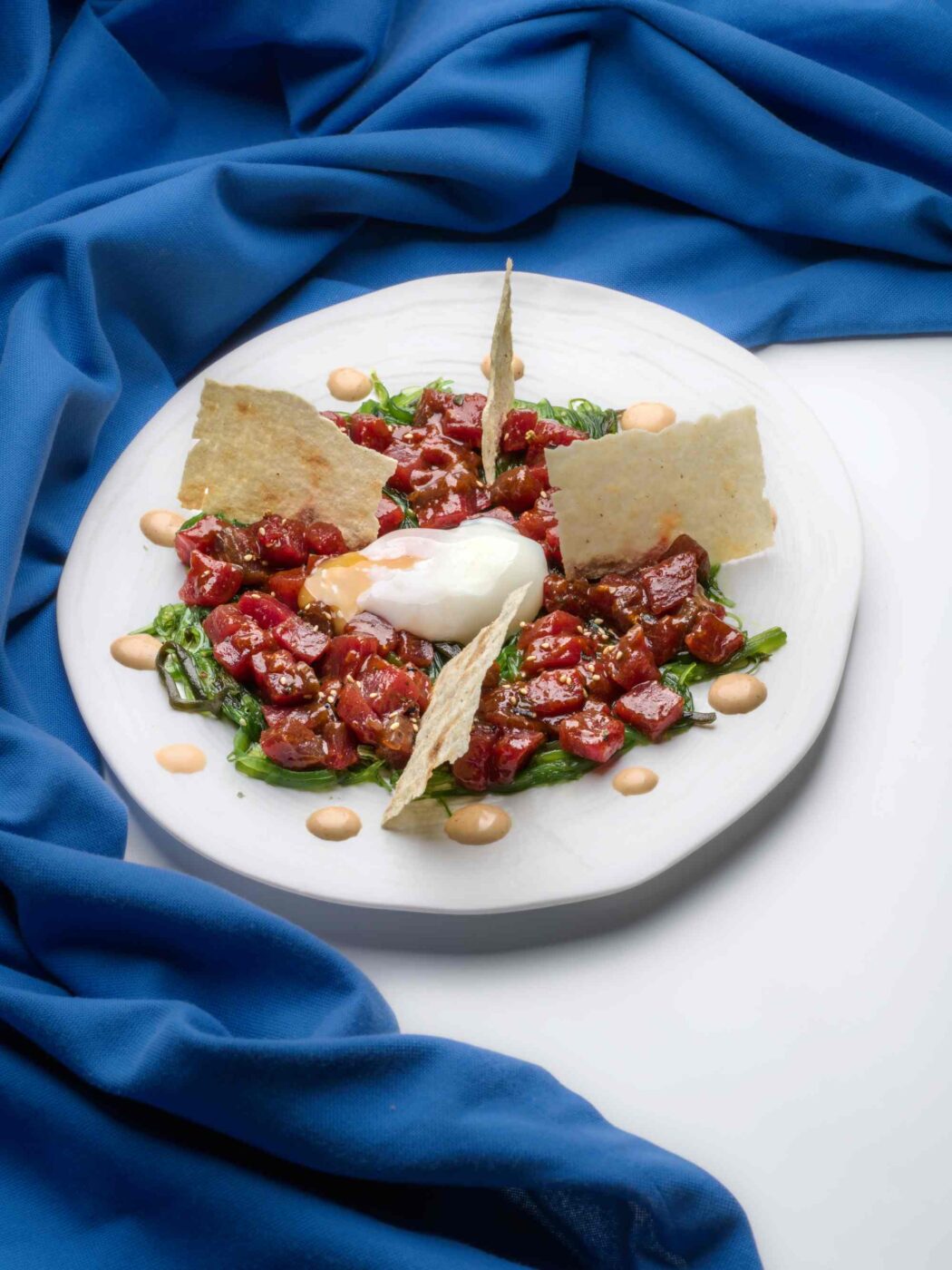
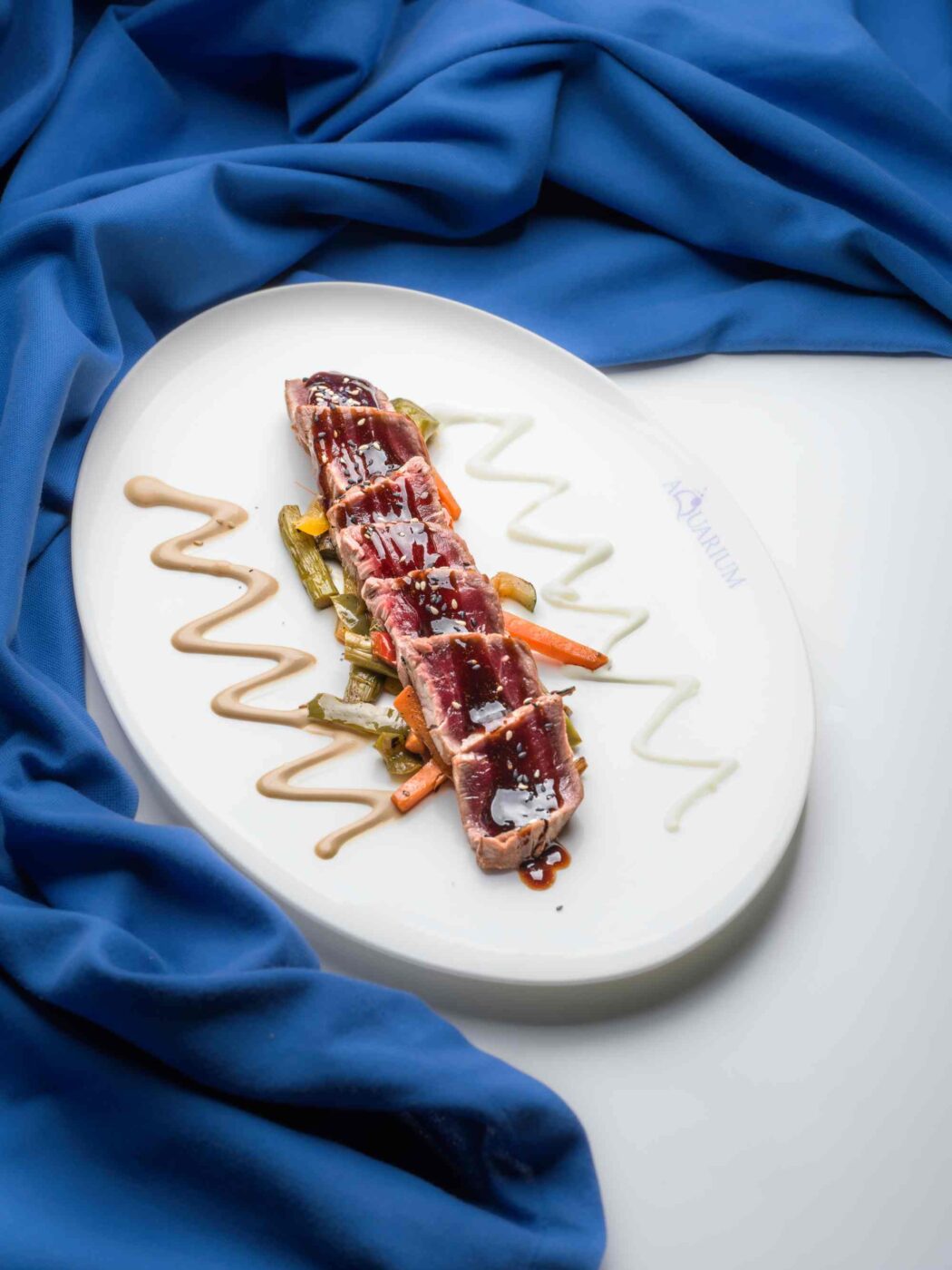
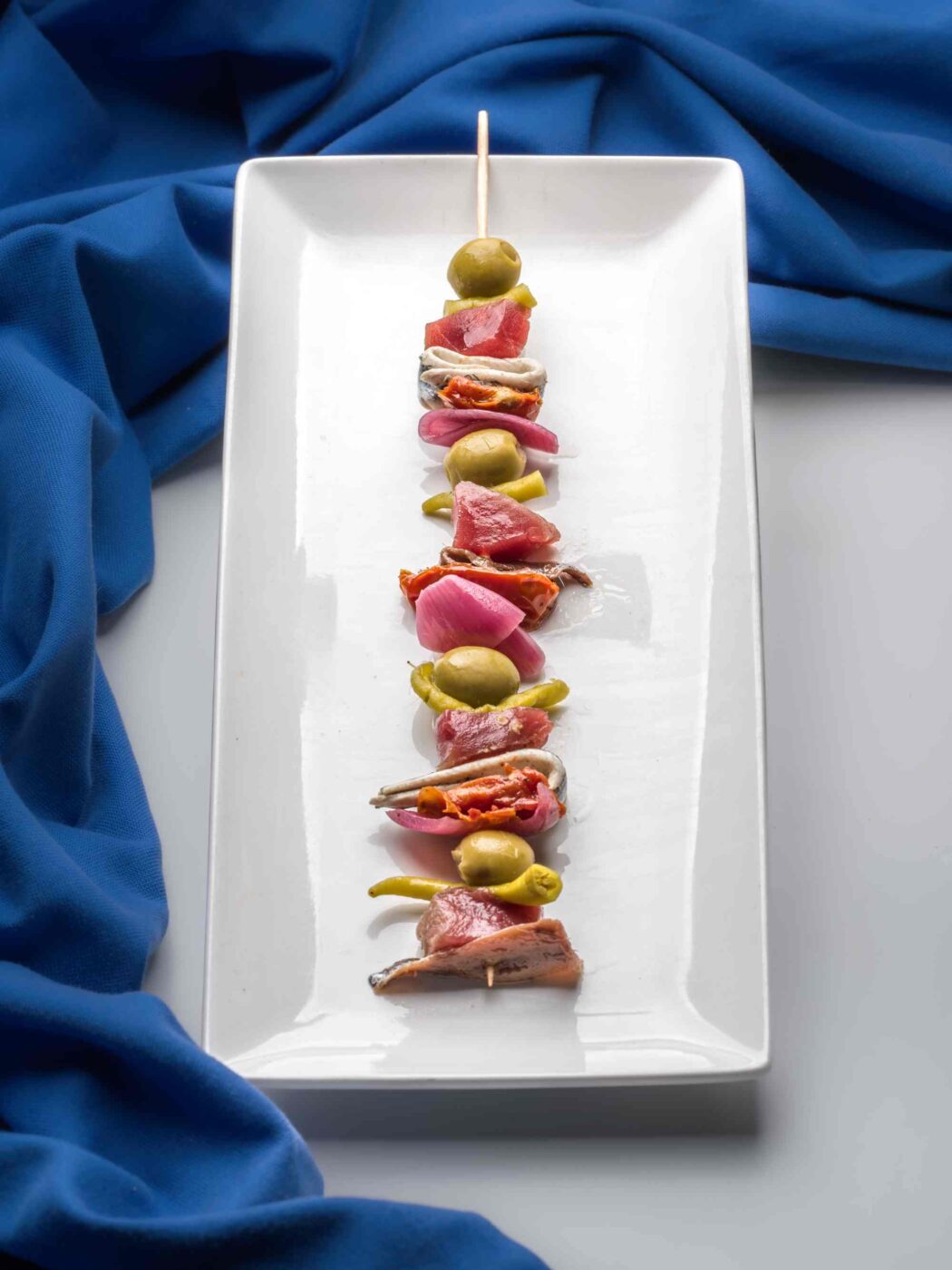
“We also make a classic gilda, but we add bluefin tuna to the salted and pickled anchovies, olives, pickled onion, piparra pepper and semi-dried tomato, which ultimately is meant as a tribute to my past in the Basque Country, and the product itself. And we serve tiradito, ceviche, marine ribs… It is such a versatile product,” he reveals.
A regular at tapas competitions, Guerrero’s prize-winning creations are a real draw for the public, who then discover a chef with a skilful hand, profundity, sense, a Basque approach to the product and painstaking selection of ingredients, above all when it comes to fish. As demonstrated, aside from the tuna, in his striking pil-pil mussels (formerly cockles), hake brochette, and cod, snapper, bream and evaristo sole, salt-crusted seabass and creamy rice with shrimp. “I travel between Menorca and Valladolid working with the Moga Group, depending on the season. In summer you have to try the rice with bluefin tuna, which we prepare with a dashi broth, tuna bones, kombu seaweed, katsuobushi, a pinch of ginger. We soak a fat-grained rice on that, which is less broken, really attractive, and add some powdered nori seaweed rather than saffron, to really ramp up the umami, and then put edamame on top and the tataki, with a few spots of soy mayonnaise.” Aquarium, a marine oasis – complete with fish tank – to plunge into in the tuna-loving heart of Valladolid.
